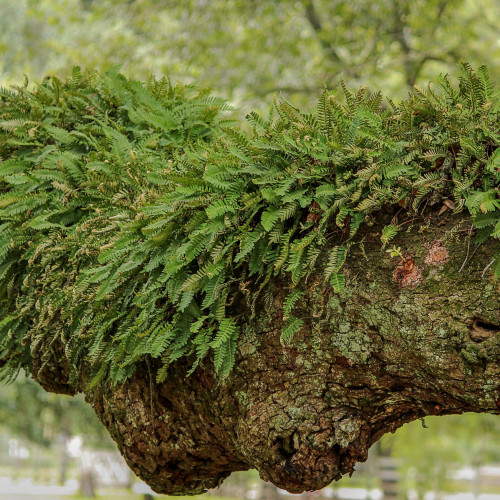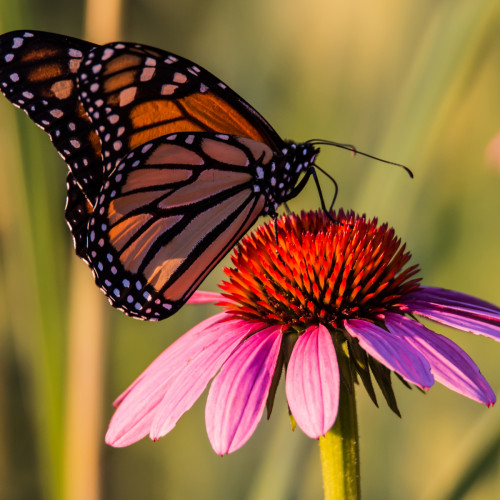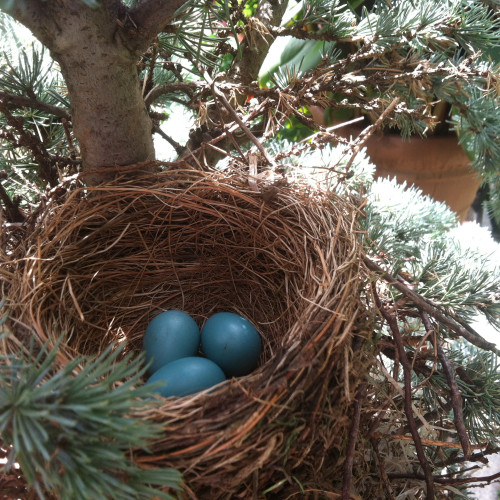Live Oaks: A Vital Habitat
Sheltering Wildlife
Live oaks serve as habitats for hundreds of plants and animals. Their acorns provide food for mammals, birds, and insects. Their branches support many types of epiphytes (plants that grow on other plants), including mosses, ferns, lichens, and bromeliads. And their leaves host moth and butterfly larvae.

Horace’s Duskywing Butterfly (Erynnis horatius)
Photograph by Kenneth Cole Scchneider / CC-BY-NC-SA 2.0.

Florida Scrub Jay (Aphelocoma coerulescens)
Photograph by Ben Smegelsky/NASA

Florida butterfly orchid (Encyclia tampensis)
Photo by Mary Keim / CC BY-NV-SA.

Resurrection fern (Pleopeltis polypodioides)
Photograph by James DeMers / CC-BY ZERO
What’s in the Trees?
The plants in these trees are Tillandsias, also known as air plants. They cling to the branches of live oaks and absorb water and nutrients from the air.

Despite its name, Spanish moss (Tillandsia usneoides) is not a moss but a member of the bromeliad family, which also includes the pineapple
Photograph by Kristine Paulus / CC-BY 2.0
Robles vivos: un hábitat vital
Protección de la flora y la fauna
Los robles vivos son el hábitat de cientos de plantas y animales. Sus bellotas proporcionan alimento a mamíferos, aves e insectos. Sus ramas sostienen muchos tipos de epífitas (plantas que crecen sobre otras plantas), entre ellas, musgos, helechos, líquenes y bromelias. Y sus hojas albergan larvas de polillas y mariposas.

Mariposa ala oscura de Horacio (Erynnis horatius)
Fotografía de Kenneth Cole Scchneider / CC-BY-NC-SA 2.0.

Chara floridana (Aphelocoma coerulescens)
Fotografía de Ben Smegelsky/NASA

Orquídea mariposa de Florida (Encyclia tampensis)
Fotografía de Mary Keim / CC BY-NV-SA.

Helecho de resurrección (Pleopeltis polypodioides)
Fotografía de James DeMers / CC-BY ZERO
¿Qué hay en los árboles?
Las plantas en estos árboles son Tillandsias, también conocidas como claveles del aire. Se adhieren a las ramas de los robles vivos y absorben agua y nutrientes del aire.

A pesar de su nombre, el musgo español (Tillandsia usneoides) no es un musgo, sino un miembro de la familia de las bromelias, que también incluye la piña.
Fotografía de Kristine Paulus / CC-BY 2.0












